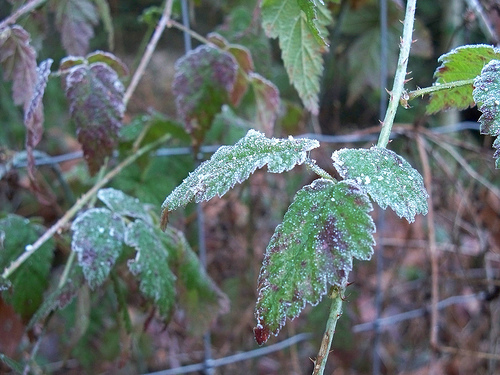If someone managed to make string from Himalayan Blackberry (the crazy big-thorned monster found all over western Cascadia) I would be very amazed and impressed.
Native Trailing Blackberry
http://christopher-olson.com/images/Coal%20Creek/11%20-%20Trailing%20Blackberry.JPG
http://www.ernieanderica.info/blue_blackberry_stem.JPG/blue_blackberry_stem-full;init:.JPG

Himalayan Blackberry

http://share3.esd105.wednet.edu/rsandelin/NWnature/Photos/Blackberry.jpg
http://www.weedmapper.org/rudi2picture.htm

